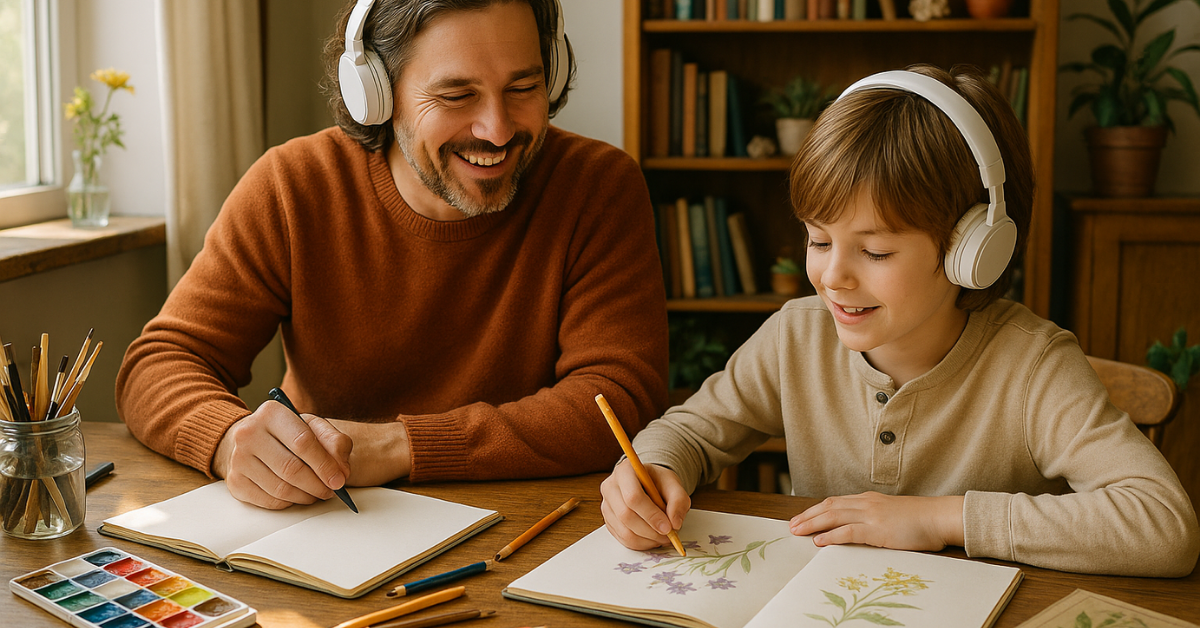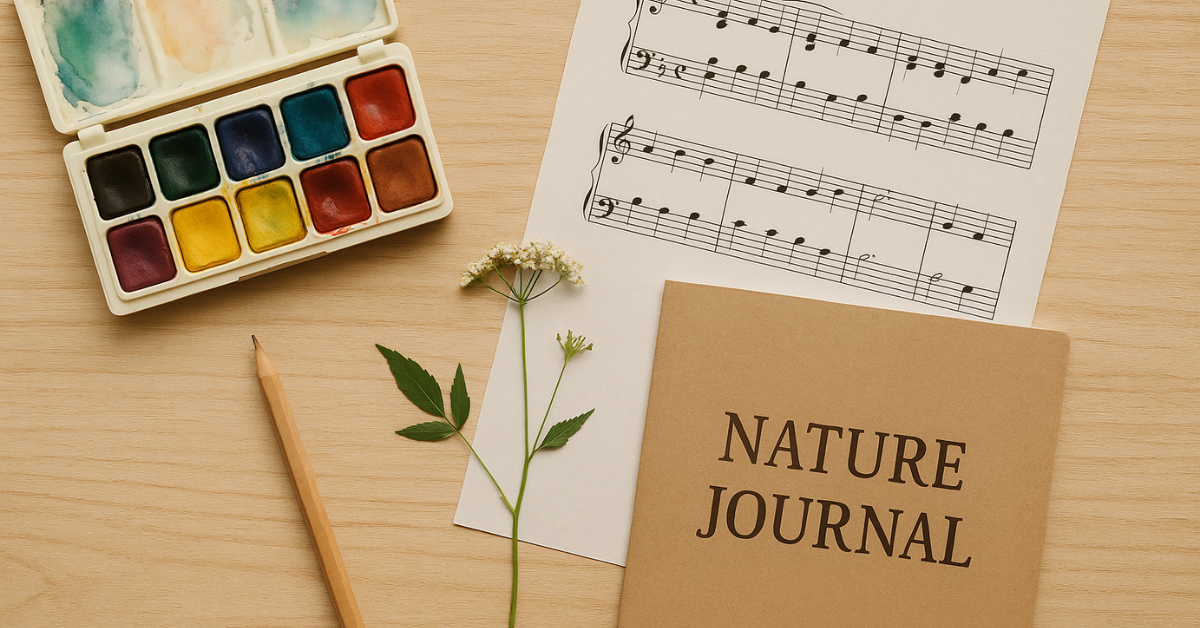Fostering a love for beauty through art and music forms a key pillar of the Charlotte Mason philosophy. Known for its holistic approach to education, this method highlights the importance of enriching children’s minds with great works of art and music to cultivate both creativity and character. For homeschooling families, this can seem like a daunting task at first. However, with the right resources and strategies, introducing Charlotte Mason art appreciation and music appreciation into your homeschool curriculum becomes a rewarding experience—for both you and your child.
This blog will explore practical ways to integrate art and music appreciation into your Charlotte Mason homeschool, provide curriculum tips, and discuss how these subjects nurture emotional and intellectual growth.
The Role Of Art And Music In The Charlotte Mason Philosophy
Charlotte Mason emphasized the value of “feasting upon ideas,” and the arts are a crucial part of that feast. Introduced early, they awaken a sense of wonder in children and help them form connections with beauty and creativity. From leafing through picture books of famous paintings to listening to classical symphonies, these experiences foster lifelong habits of paying attention to detail, feeling deeply, and thinking critically.
Why Art Appreciation Matters
Charlotte Mason believed that exposure to art improves observation skills, widens cultural understanding, and nurtures imagination. Art appreciation teaches children to notice patterns, colors, and stories within paintings. Over time, they come to respect and enjoy works by great masters like Monet, Van Gogh, or Rembrandt.
For homeschool families, this process doesn’t require expensive classes. Instead, it’s about creating regular opportunities to enjoy art together. For instance:
- Picture Study: Select a single painting and observe it for an extended period. Encourage your child to absorb the details and later describe it from memory.
- Art History Context: Share the backstory of the artist and the era in which the painting was created.
- Museum Visits: If possible, visit local art museums to see these masterpieces in person. This brings historical context alive and enriches the experience.
The Importance of Music Appreciation
Music appreciation is equally significant within the Charlotte Mason approach. According to this method, studying the works of great composers like Bach or Mozart enhances children’s capacity for concentration, deep thought, and creativity. Music connects auditory learning with pattern recognition, emotional expression, and a sense of rhythm.
Much like art, music should be a joyful, immersive experience. Charlotte Mason emphasizes the enjoyment of great music over formal technical training in the beginning. Families can incorporate composer studies, live performances, or at-home listening sessions to help children connect with music at a personal level while building their knowledge base.

How To Integrate Charlotte Mason Art Appreciation Into Your Homeschool
If you’re wondering how to build Charlotte Mason art appreciation into your homeschool day, here are practical tips to get started.
Picture Study – A Core Practice
Picture study is a mainstay of the Charlotte Mason approach. It’s simple, effective, and requires minimal materials. Follow these steps to begin this practice with your child:
- Select a Single Artist for a Term: This could be someone like Picasso, Vermeer, or Cassatt. Ideally, choose six works from the artist to study over six weeks.
- Observe Without Judgment: Have your child observe one painting at a time for several minutes, guiding them to notice as much as possible without critique.
- Set Aside Weekly Time: Commit to spending one short session per week on picture study.
- Narration: Ask them to tell what they observed after viewing. This further promotes their attention to detail.
- Art Recreation: Allow your children to recreate parts of the painting in their own style. This not only ignites creativity but deepens their connection to the artwork.
Setting an Ambience
Creating an environment that supports art appreciation doesn’t mean redesigning your home. Small touches can make a big difference:
- Rotate prints of famous paintings around your house.
- Use books like Discovering Great Artists to introduce new masters and their techniques.
- Keep sketching materials like pencils and paper within easy reach for spontaneous creative expression.
Teaching Beyond the Paintings
Include age-appropriate discussions about artistic movements, innovations in technique, or specific moments in art history. You could explore the Italian Renaissance one semester, Impressionism another, and so on. By linking this to other subjects like history, your children gain a well-rounded view.
Creating A Homeschool Music Appreciation Program
Unlike formal music lessons, music appreciation is about learning to love music organically. Here’s how to weave it easily into your curriculum.
Composer Study
Charlotte Mason homeschoolers often choose one composer to study over several weeks or months. This allows children to gradually become familiar with their unique style and contributions. Here’s a practical approach:
- Six Weeks per Composer: Select works by Beethoven, Handel, or Chopin, dedicating one term to each.
- Listen Weekly: Spend 10-15 minutes listening to a piece, encouraging quiet attentiveness.
- Story Context: Research a few anecdotes from the composer’s life to share with your child. This can include events that inspired specific compositions.
- Music Narration: After listening, encourage children to narrate their impressions of the piece or describe what emotions the music inspired in them.
Build a Listening Schedule
Music appreciation thrives with consistency. Consider creating a simple schedule to ensure it becomes a daily or weekly habit. For example:
- Mondays can focus on lyrical classical music (e.g., Vivaldi’s “Four Seasons”).
- Fridays may involve exploring modern instrumental works or jazz-infused classics to diversify exposure.
Live Music Experiences
Whether it’s an outdoor concert or a local symphony, live performances offer an unforgettable way to connect with music. They allow children to witness the dynamics of real instruments, ensemble cooperation, and the impact of acoustics.
Tools and Resources for Music Study
Several resources make it easier to integrate music into your day:
- Streaming Services: Platforms like Spotify, YouTube, or Apple Music often have curated playlists dedicated to specific composers or periods.
- Books: Lives of the Musicians by Kathleen Krull provides engaging stories about famous composers.
- Apps: Tools like “Classics for Kids” bring interactive music education directly to your homeschooling toolbox.
Encourage Hands-On Musical Creativity
While music appreciation focuses on listening, experiment with hands-on creativity to deepen the connection. Simple activities like playing percussion, composing tunes, or experimenting with basic instruments can unlock musical potential.
The Benefits Of Incorporating Art And Music Appreciation
While both art and music appreciation nurture a love for beauty, they also teach discipline, sharpen intellect, and deepen emotional intelligence. The benefits go far beyond the classroom and enrich your children’s development.
Emotional Growing Points
Art and music give children access to deep, universal emotions. For example, observing the swirling skies of Van Gogh’s Starry Night or hearing the emotional highs of Beethoven’s symphonies teaches empathy. These lessons on human values and feelings can build compassion and self-awareness.
Developmental Advantages
- Improved Focus: Both art and music teach children to observe or listen deeply, which translates to better attention spans in other academic areas.
- Cultural Literacy: Exposure to famous works helps children understand and appreciate global history and culture.
- Enhanced Critical Thinking Skills: When analyzing art or music themes, kids develop the ability to notice nuance and interpret broader meanings.
Cultivating Lifelong Learners
Both fields encourage curiosity. A child engaged in art or music asks questions, seeks inspiration from the world around them, and continues to grow. This unquenchable thirst for learning becomes a lifelong gift.
By introducing Charlotte Mason art appreciation and music appreciation into your homeschool, you open a world of beauty, emotion, and creativity for your family to share. These practices teach children that education is not limited to books or lectures—it’s found in the vivid brushstrokes of a painting and the harmonious chords of a piano.





